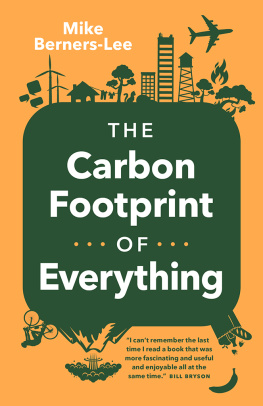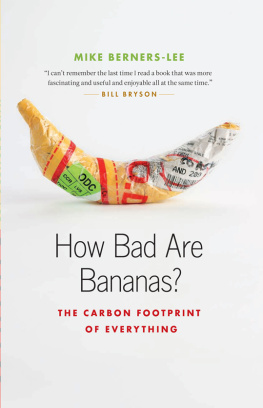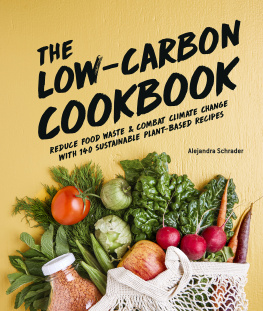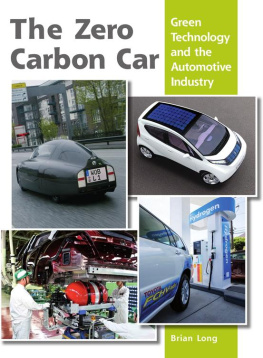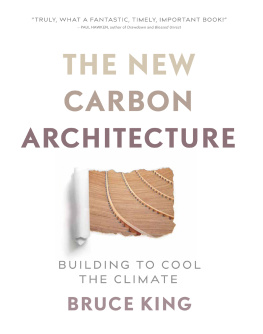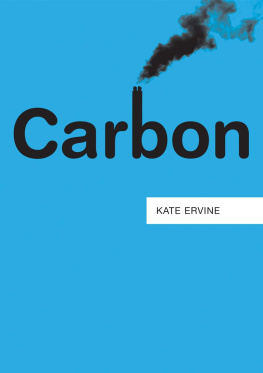If were serious about really addressing climate change, we need to become energy and carbon literate, and get to grips with the implications not only of our choices but also the bigger infrastructures which underpin the things we consume. How can we educate our desires unless we know what were choosing between? Mike Berners-Lee, to my complete delight, has provided just the wonderful foundation we needa book that somehow made me laugh while telling me deeply serious things.
PETER LIPMAN, DIRECTOR OF SUSTRANS
Copyright 2022 by Mike Berners-Lee Originally published as How Bad Are Bananas? The Carbon Footprint of Everything in North America by Greystone Books in 2011; updated North American edition published in 2022 as The Carbon Footprint of Everything.
UK edition originally published by Profile Books in 2010; updated UK edition first published in 2020 by Profile Books Ltd.
22 23 24 25 26 5 4 3 2 1
All rights reserved. No part of this book may be reproduced, stored in a retrieval system or transmitted, in any form or by any means, without the prior written consent of the publisher or a license from The Canadian Copyright Licensing Agency (Access Copyright). For a copyright license, visit accesscopyright.ca or call toll free to 1-800-893-5777.
Greystone Books Ltd.
greystonebooks.com
Cataloguing data available from Library and Archives Canada
ISBN 978-1-77164-576-8 (pbk.)
ISBN 978-1-77164-577-5 (epub)
Copy editing by Lynne Melcombe
Proofreading by Alison Strobel
Indexing by Bill Johncocks
Cover design and composite by Jessica Sullivan
Cover composite illustration credits: Space Vector,
Amanda RY, NIKI90/Shutterstock
Greystone Books gratefully acknowledges the Musqueam, Squamish, and Tsleil-Waututh peoples on whose land our Vancouver head office is located.
Greystone Books thanks the Canada Council for the Arts, the British Columbia Arts Council, the Province of British Columbia through the Book Publishing Tax Credit, and the Government of Canada for supporting our publishing activities.

Contents
Introduction
This book has its origins back in 2007. I was working in the nascent field of carbon footprintsworking out how much everyday things contribute to carbon emissionsand I agreed to walk around a supermarket with a journalist who was writing about low-carbon food. We trailed up and down the aisles with the Dictaphone running as she plied me with questions, most of which I was pitifully unable to answer. What about these bananas? How about this cheese? Its organic. That must be better, no? Lettuce must be harmless, right? Should we have come here by bus? How big a deal is food anyway?
It was not at all clear what a carbon-conscious shopper should buy and on that day we couldnt fill in much of the knowledge. Indeed, the article never happened, and probably just as well. But after that, I began looking long and hard into all kinds of carbon footprints and carried out numerous studies, including one for a supermarket chain. This book, which first came out in 2010 under the title How Bad Are Bananas? The Carbon Footprint of Everything and has been completely revised for this new 2020 edition, set out to answer the journalists questions, and many more besides.
Once I began writing, it was clear that it should be more than just a book about food and travel. I wanted to give a sense of the carbon impactthat is, the climate change impact of everything we consume and do and think about, both at home and at work. I wanted to help us all to develop a carbon instinct.
Although I have discussed the footprint of just over a hundred items, I hope that as you read about these you will gain a sense of where carbon impacts come from, so that you will be able to guesstimate the footprint of more or less anything you come across. It wont be exact, but I hope youll at least be able to get the number of zeros right most of the time. For example, you will have a good idea of how bad bananas are (spoiler alert: not bad at all; they turn out to be a fine low-carbon food, albeit with sustainability issues).
How is this new edition different?
Almost all the numbers have had to be updated for the 2020 edition. But the big difference, ten years on, is that the context has moved a long way forward. In 2010, climate change was just very serious. Four years had passed since the documentary An Inconvenient Truth
Meanwhile, the science has been getting notably scary: a temperature change of 1.5C above pre-industrial levels is now widely acknowledged to be more dangerous than we thought 2.0C was back then. And we are getting there fast. As I write this, we are at about 1.1C, compared to 0.88C in 2010an increase of 25 percent in ten years. And the effects of climate change are beginning to show around the world: glaciers have shrunk, plant and animal ranges have shifted, trees are flowering sooner, and theres been a dramatic loss of sea ice and accelerated sea level rise. We have had more dramatic climate events, with longer, more intense heat-waves, wildfires, and droughts. Methane has been exploding from the melting permafrost, leaving thousands of craters up to 50 meters (165 feet) across.
Thats the bad news. But on the very positive side there is finally a sense that humans might wake up to the challenge. The last couple of years have seen Extinction Rebellion (XR) on the streets and Greta Thunberg leading a global movement of striking schoolkids. We have a long way to go and no time to lose. But compared to 2010 I feel more hope, more fear, and a good deal more urgency.
Revising the entries in the bookand writing new ones on things that werent on the radar a decade ago, like electric bikes, cryptocurrencies, and the spiraling demands of information technology (IT)Ive tried to keep the tone fun and practical, like the original book. That said, I find it harder to joke about climate these days, and Ive become less shy in my messages to policy makers, both in this book and when Im invited to talk to the media. We need to make it impossible for politicians to pretend they dont understand the essentials of the climate emergency.
At the end of this book, Ive added a new section on what each of us can do to help deal with climate change. A part of this is about cutting our carbon footprints. The rest has my thoughts on all the other actions we can take to push our governments, workplaces, and society to make the big changes we so urgently need. Im not trying to tell anyone what to do, but if you are asking, Ive got some much more detailed suggestions than I had last time.
Some basic assumptions
The world of carbon counting has moved on slightly in recent years, though it still feels a bit like the Wild West. Theres a nasty glitch called truncation error, which I discuss at the end of this book, that has led government bodies and big companies like Apple, Dell, and HP, to understate their carbon impact by up to 40 percent.

